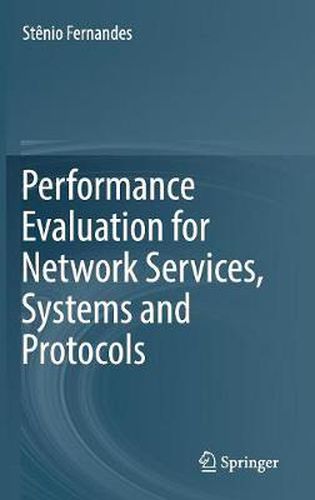Readings Newsletter
Become a Readings Member to make your shopping experience even easier.
Sign in or sign up for free!
You’re not far away from qualifying for FREE standard shipping within Australia
You’ve qualified for FREE standard shipping within Australia
The cart is loading…






This title is printed to order. This book may have been self-published. If so, we cannot guarantee the quality of the content. In the main most books will have gone through the editing process however some may not. We therefore suggest that you be aware of this before ordering this book. If in doubt check either the author or publisher’s details as we are unable to accept any returns unless they are faulty. Please contact us if you have any questions.
This book provides a comprehensive view of the methods and approaches for performance evaluation of computer networks. It offers a clear and logical introduction to the topic, covering both fundamental concepts and practical aspects. It enables the reader to answer a series of questions regarding performance evaluation in modern computer networking scenarios, such as ‘What, where, and when to measure?’, ‘Which time scale is more appropriate for a particular measurement and analysis?’, ‘Experimentation, simulation or emulation? Why?’, and ‘How do I best design a sound performance evaluation plan?’.
The book includes concrete examples and applications in the important aspects of experimentation, simulation and emulation, and analytical modeling, with strong support from the scientific literature. It enables the identification of common shortcomings and highlights where students, researchers, and engineers should focus to conduct sound performance evaluation.
This book is a useful guide to advanced undergraduates and graduate students, network engineers, and researchers who plan and design proper performance evaluation of computer networks and services. Previous knowledge of computer networks concepts, mechanisms, and protocols is assumed. Although the book provides a quick review on applied statistics in computer networking, familiarity with basic statistics is an asset. It is suitable for advanced courses on computer networking as well as for more specific courses as a secondary textbook.
$9.00 standard shipping within Australia
FREE standard shipping within Australia for orders over $100.00
Express & International shipping calculated at checkout
This title is printed to order. This book may have been self-published. If so, we cannot guarantee the quality of the content. In the main most books will have gone through the editing process however some may not. We therefore suggest that you be aware of this before ordering this book. If in doubt check either the author or publisher’s details as we are unable to accept any returns unless they are faulty. Please contact us if you have any questions.
This book provides a comprehensive view of the methods and approaches for performance evaluation of computer networks. It offers a clear and logical introduction to the topic, covering both fundamental concepts and practical aspects. It enables the reader to answer a series of questions regarding performance evaluation in modern computer networking scenarios, such as ‘What, where, and when to measure?’, ‘Which time scale is more appropriate for a particular measurement and analysis?’, ‘Experimentation, simulation or emulation? Why?’, and ‘How do I best design a sound performance evaluation plan?’.
The book includes concrete examples and applications in the important aspects of experimentation, simulation and emulation, and analytical modeling, with strong support from the scientific literature. It enables the identification of common shortcomings and highlights where students, researchers, and engineers should focus to conduct sound performance evaluation.
This book is a useful guide to advanced undergraduates and graduate students, network engineers, and researchers who plan and design proper performance evaluation of computer networks and services. Previous knowledge of computer networks concepts, mechanisms, and protocols is assumed. Although the book provides a quick review on applied statistics in computer networking, familiarity with basic statistics is an asset. It is suitable for advanced courses on computer networking as well as for more specific courses as a secondary textbook.